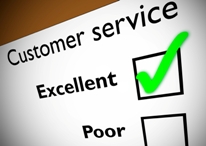My first job was in a clothing store.
It was a great place for a high school kid like me to learn new skills. I started in the men's department, but was eager to learn everything I could.
Fortunately, my boss noticed my initiative and quickly trained me on a variety of functions:
Women's department
Shoe department
Stock department
Cashier
New hire trainer
All this training made me feel recognized for my hard work. It was only later that I realized my boss saw it differently.
My manager didn't train me for recognition. She was investing in my development because it made me a more valuable employee. Budgets were tight, and my boss didn’t have the luxury of frivolous training.
Read this post before you recognize your good employees with a training class, seminar, or conference. You might save a lot of hassle.
Why training is not good recognition
Years after working in retail, I found myself managing a department that trained thousands of employees.
When I arrived, we had a recognition program in place. Employees could attend various training programs if they did a good job. There was even special recognition for the employees who completed the most training classes each quarter.
None of it worked.
The program cost a lot of money, but there was nothing to show for it. The employees who were recognized with training weren't any more loyal or more productive than the employees who didn’t attend.
The model was broken.
Training is fundamentally about problem solving. It works best when someone needs to do a particular task, but lacks the knowledge, skills, or ability to do it.
There's no problem to be solved when training is used purely for recognition. The employee doesn't learn anything that they can implement, so that training often ends up wasted.
My boss at the clothing store understood this.
She offered me the chance to learn new skills because I could work a wider variety of shifts, which gave her more flexibility when creating schedules. She had to hire fewer employees for each department because I could fill in anywhere. I became more productive and helped increase sales.
How to use training effectively
The best employee development occurs at the intersection of two things.
There's a clear business need.
The employee is eager to learn.
That's what happened at the clothing store.
Learning new skills made me feel good about the work I did. I felt recognized not by the training itself, but by the new assignments and responsibilities that came as a result. The training was a means to an end.
I also received tangible benefits from learning new skills:
I was able to pick up more shifts.
My skills allowed me to work more desirable hours.
The job was more interesting because I worked in a variety of departments.
Those lessons from my first boss stayed in my head when I managed a training department that used training for recognition. I was under pressure from senior leaders to cut costs and generate more results.
We quickly altered the recognition model and focused on creating more individual development plans. Some got training to solve a specific challenge in their current role. Others were trained to prepare them for a promotion.
Employees loved it.
The targeted training helped improve their performance at work. They got bigger raises and earned faster promotions.
There was one more surprising result.
Some employees were happy to never attend any training beyond what was absolutely required. These employees typically had worked competently in the same job for years. They were content exactly where they were and had no further ambitions.
The recognition model made them look like bad employees if they weren't going to training, but that wasn't the case at all. They were good employees who didn't often need to learn new skills.
These employees loved the new model, too, because it dramatically cut down on the amount of training classes their bosses expected them to take.
Finally, senior leaders loved the new model. Productivity increased, we had more promotion-ready employees, and they could see exactly what their training investment was producing.
Conclusion
Imagine sending an employee to a conference or seminar that's related to their job or industry. What if you knew in advance they would implement absolutely nothing of value as a result of the training?
You might hesitate to send them, even if they really wanted to go.
The fix is easy. Whenever you plan for employee development, look for the intersection between what the employee wants and the business needs.
That's where the magic happens. The employee might enjoy going to training, but they’ll feel even better when they come back to work and can use that training to solve a problem.
Once you identify a clear training need and an eager employee, you can use this guide to prepare them for success.





